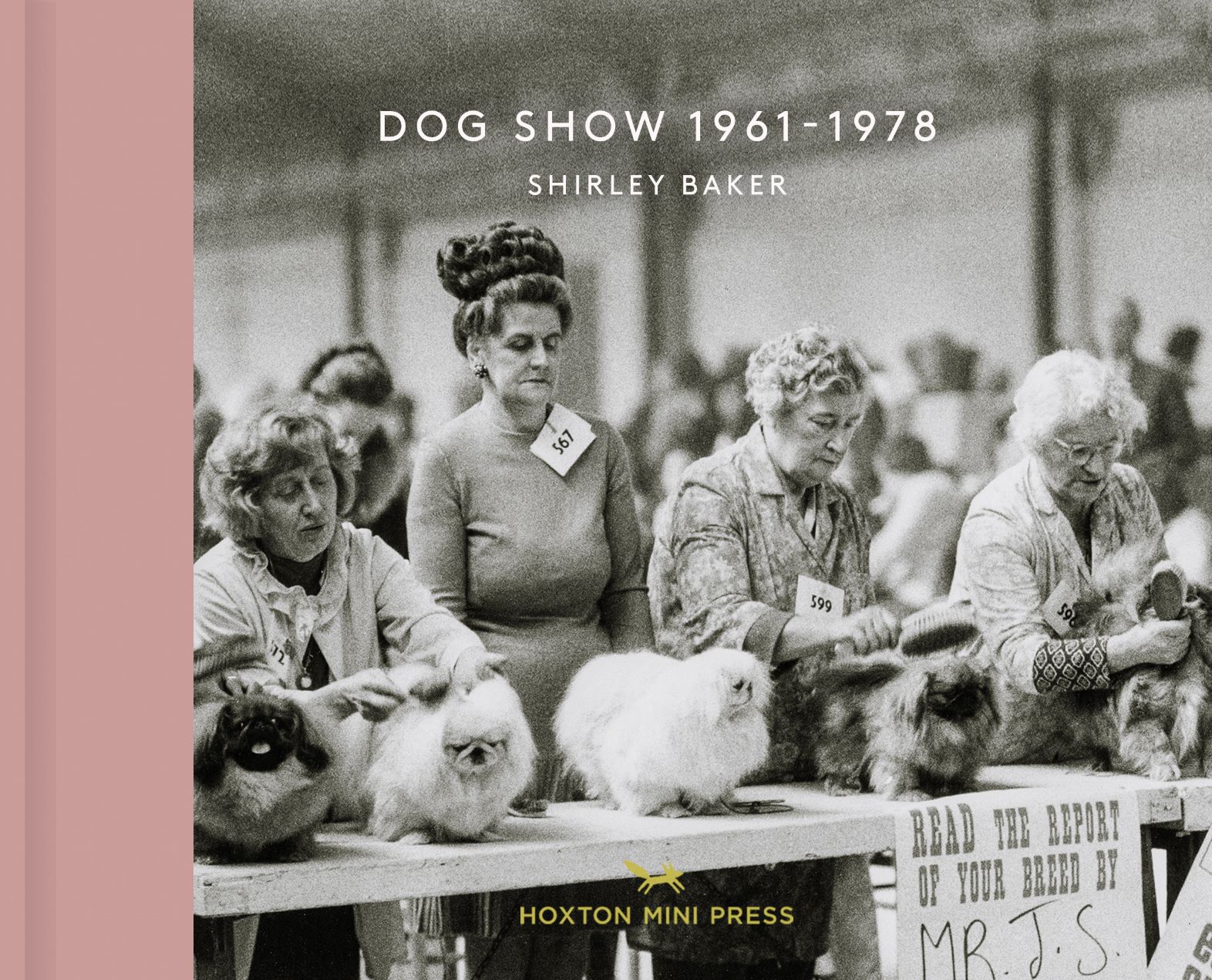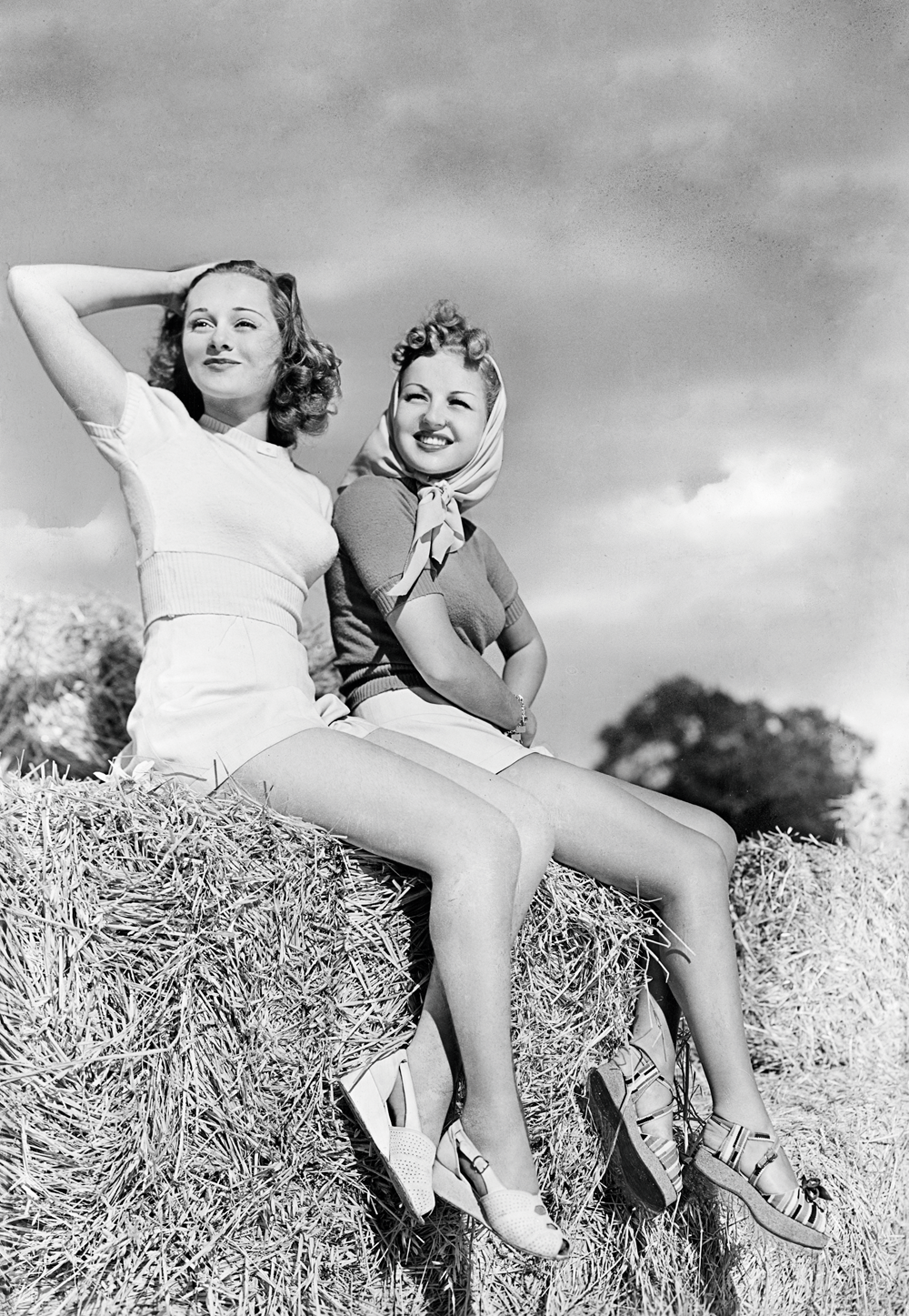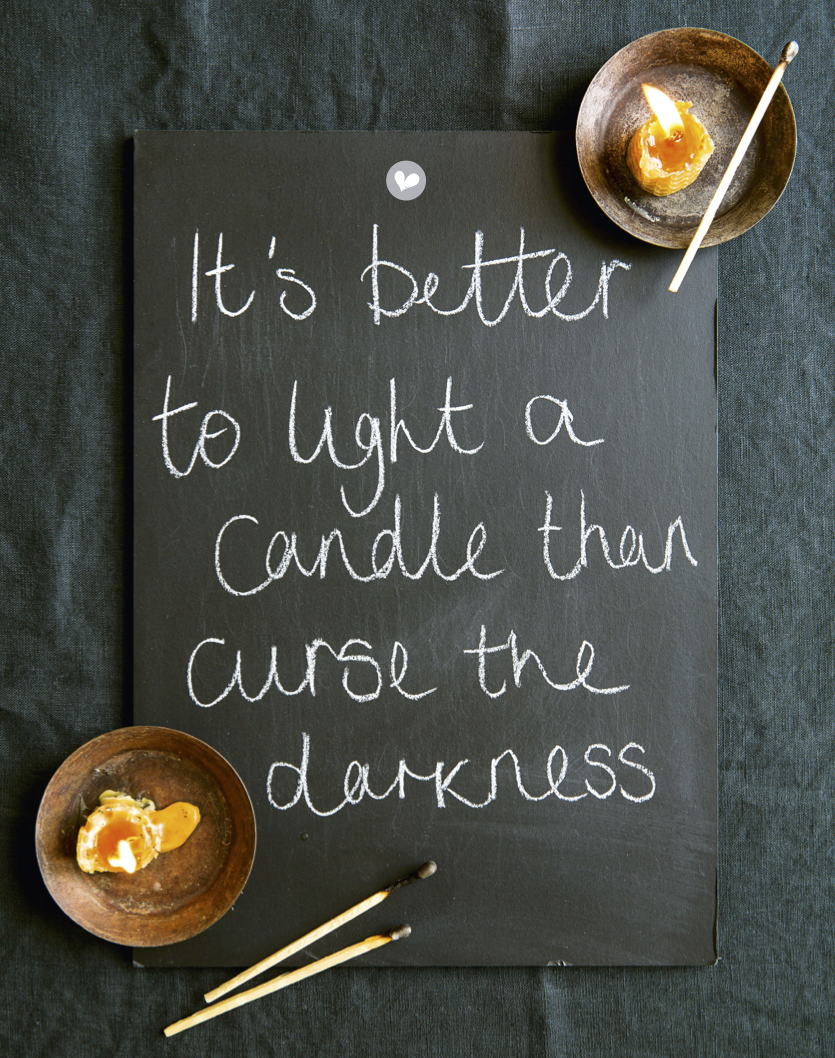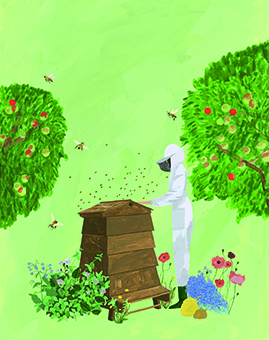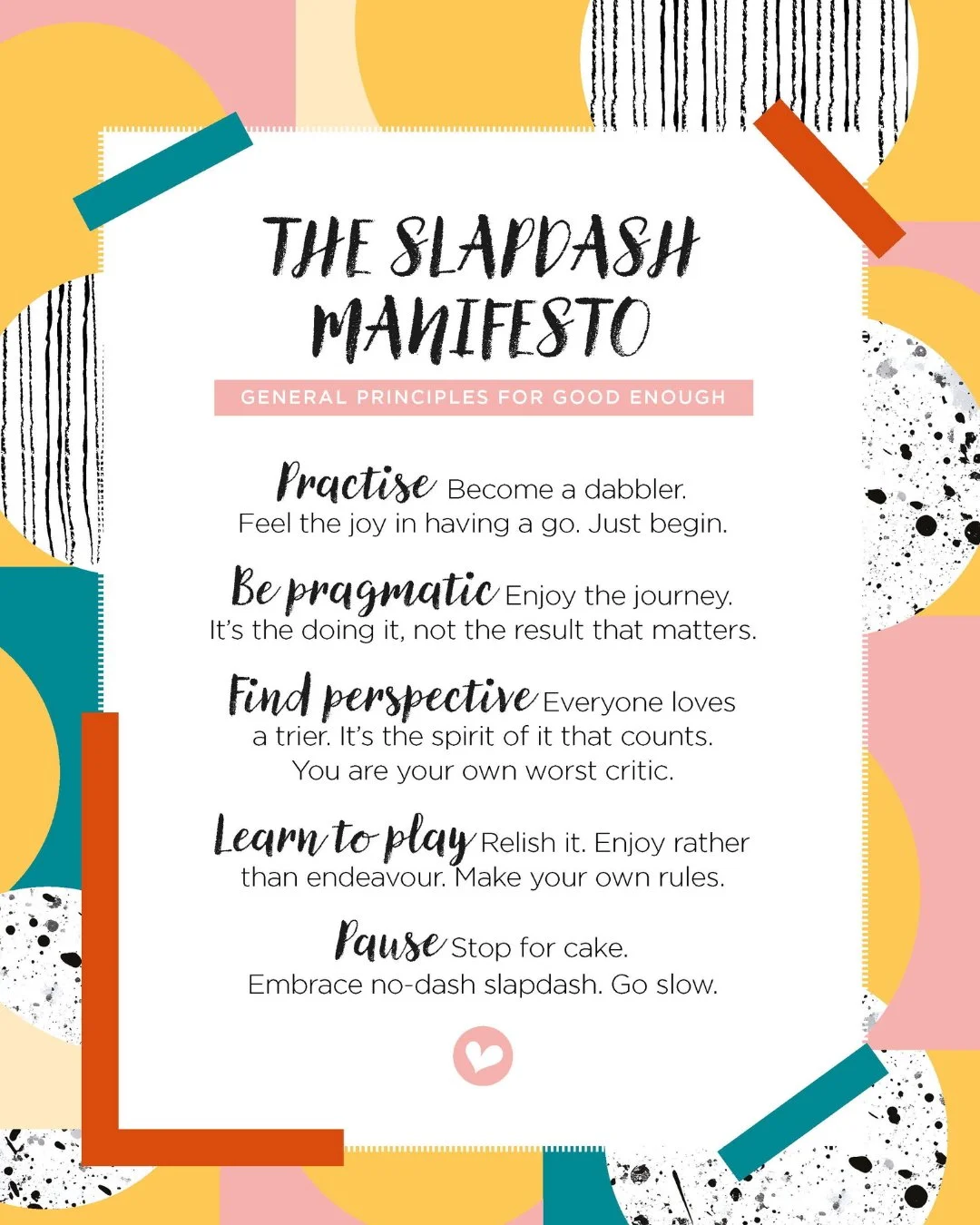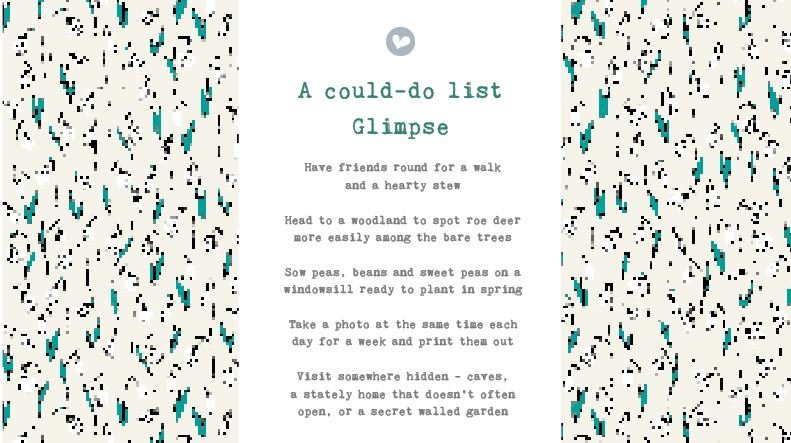Milton white dining table, £139.99; Pendle dining chair, £59.99, furniturechoice.co.uk
Create a space just for you
Hoping to carve out a study, nook or understairs hole just for you this weekend? Here’s how.
CHOOSE THE RIGHT LIGHT Sitting in your own pool of light creates a boundary. This, it says, is my area where I do my things. A floor lamp positioned directly over a chair in a corner of the room creates a reading nook. An Anglepoise directed at a desk sends a subliminal ‘I’m busy’ message.
SIT IN A COMFORTABLE CHAIR Essential, whether an enveloping armchair to curl up in with a book, or a proper office chair. Make sure everyone knows it’s your chair and your chair alone, like Martin’s in Frasier.
HAVE A SIDE TABLE AT THE READY A table beside you is necessary to put your things on. These might include a radio, a vase filled with your favourite flowers and, obviously, a mug of tea.
KEEP A BLANKET HANDY Nothing says: ‘I’m enjoying some down time’ like a throw tucked around your legs or across your shoulders.
WELCOME PETS You might not feel the need for human company, but a pet will always be welcome. A cat purring beside a computer as you type, or a dog lying across your feet as you listen to the radio, provides exactly the amount of interaction and affection required.
Read more of Clare Gogerty’s advice on creating a room of one’s own in our November issue. On sale now.
Get hold of your copy of this month's The Simple Things - buy, download or subscribe
Read more on simple interiors…
More from the November issue…
Hendrik armchair, £1,200, sofa.com (dog not included)
Judith Shakespeare: heroine who never was
A short biography of an imaginary woman we should all get to know a little better
We’ve been hankering after ‘a room of one’s own’ this month. You can read about how to create the perfect R.O.O.O. in the November issue, but one thing’s for sure, a little spot somewhere in the house that is ‘just yours’, whether to glorify in mess, old books and bits of paper, or to keep like your own tiny palace, is a luxury we all would love.
In her essay ‘A Room of One’s Own’, published in 1929, Virginia Woolf asserted that a woman must have “money and a room of her own if she is to write fiction”. It never stopped JK Rowling, but to be fair she had the advantage of women’s liberation.
To prove her point that in Elizabethan times it would have been impossible for a woman to have written the works of Shakespeare, no matter what her talent, Woolf introduces us to Judith, Shakespeare’s sister. “We thought his sister’s name was Joan?” we hear you cry, as one. Well, yes, it was. No one is quite clear whether Ginny just wanted to jazz her up a bit or if she’d made a mistake. But nonetheless, Judith Shakespeare is the imaginary sister of William who appears in the essay.
She is a clever girl, with all the gifts of her brother but they come to naught: "She was as adventurous, as imaginative, as agog to see the world as he was. But she was not sent to school.” She hides her reading and study for fear of a telling off from her parents and is forced to become engaged at a young age. To avoid a life of domestic drudgery she runs away to become an actress, is roundly ridiculed by all and sundry, falls pregnant by her employer and takes her own life. “She lives in you and in me,” said Woolf, “and in many other women who are not here tonight, for they are washing up the dishes and putting the children to bed.”
The sad story of Judith Shakespeare is one of the most famous parts of Woolf’s essay and has inspired all sorts of writers and artists since. Not least, the band Shakespeare’s Sister who named themselves for Judith, and The Smiths, who recorded a song of the same name.
The inspiration we are taking from poor Judith’s short (imaginary) life is that we owe it to our literary fore-sisters to make the effort to find space for a room of our own. Because we’re worth it. Our regular feature, The Comfort of Things, in the November issue has more on how to create your very own ‘room of one’s own’.
Get hold of your copy of this month's The Simple Things - buy, download or subscribe
Read more on The Comfort of Things…
More from the November issue…
Our favourite fictional dogs
We all love a dog, so here we’ve rounded up some of favourites from fiction TV and film.
Dog Show: 1961-1978 by Shirley Baker. Cover photograph: Shirley Baker
To honour the publication of Dog Show, showcasing the work of photographer Shirley Baker, which is featured in November’s The Simple Things, we’ve made a list of our top five fictional dogs. Now, SIT! (And read and enjoy our best in show).
Snoopy (beagle*)
A real case of the side-act stealing the show, Snoopy was the pet of Charlie Brown, anti-hero of the Peanuts comic strip. But there’s no denying he was the real star. Known for sleeping on the uncomfy-looking roof of his kennel rather than the inside, having several alter-egos including college student, Joe Cool and a First World War Flying Ace, as well as his unlikely friendship with a yellow bird, Snoopy is world-famous and has appealed to generations of children (and beagle-loving adults). An icon in his own right, the first drawings of Snoopy were based on Charles M Schulz’s dog, Spike. *He’s always referred to as ‘a beagle’ but Schulz once said he wasn’t, he just thought ‘beagle’ was a funny-sounding word.
Snowy (wire fox terrier)
Tintin’s faithful friend Snowy is the only other character to appear in all the comic albums, he even occasionally addresses his internal monologue to the reader. Very postmodern. His original name in the French was Milou, the name of Herge’s first girlfriend, and short for Marie-Louise. He was called Snowy in the English translation for his white colour (and the fact that Snowy was short enough to fit easily into the speech balloons.
Lassie (rough collie)
Lassie first featured in a short story by Eric Knight, which later (in 1940) became a full novel, Lassie Come Home, and was made into a film by MGM in 1943, with a dog named ‘Pal’ acting in the title role. The story may well have been based on a fictional dog called Lassie depicted by Elizabeth Gaskell. Pal’s descendants continued to play Lassie in TV series over the next 20-odd years, scampering off to rescue many a child from a mine shaft or well. GOOD GIRL, Lassie.
Scooby-Doo (great dane)
Comrade and crime-busting partner of Shaggy Rogers, Scooby-Doo is the true hero of the Hanna-Barbera series that began in 1969. Famously named for a line in the Frank Sinatra song, Strangers in the Night, Scoobs has been foxing fairground thieves and eating multi-layered club sandwiches for years and continues to delight children to this day.
Argos from The Odyssey (breed unknown)
Hankies at the ready. Argos was Odysseus’s dog before he left home to fight in the Trojan war for ten years, and then spent a further decade returning home. When he finally returns, disguised as a beggar to fool his wife’s suitors, he sees Argos, his faithful, strong and speedy hound, sitting in pile of cow muck. As he walks by, Argos drops his ears and wags his tail but is physically unable to greet his master. Odysseus cries as he passes him, unable to go to his faithful friend. And Argos dies, having fulfilled his destiny of welcoming his master home to his own hall.
Jumble from The William stories (mongrel)
Jumble originally belonged to an artist and his daughter and the daughter gave Jumble to William in exchange for a kiss. Knowing William’s liquorice-water-encrusted chops as we do, we think William got the better end of the deal there and Jumble went on to be (almost) the fifth member of The Outlaws.
Toto from The Wizard of Oz (some sort of Terrier)
Toto belongs to Dorothy Gale of ‘there’s no place like home’ fame. He’s been variously thought to be either a Cairn, Yorkshire or Boston Terrier and he accompanies Dorothy on her trips to the Land of Oz. Toto does not let on in the early books - not until TikTok of Oz - that he can speak! Really, you might have mentioned this before. Toto!
Gnasher from The Beano (Abyssinian Wire-haired Tripe Hound)
Dennis the Menace’s faithful and (very) furry friend Gnasher first appeared in The Beano in 1968. He was based on the idea that dogs look like their owners and it was suggested to the illustrator that he simply drew Dennis’s hair and added arms, legs and eyes. And that is (more or less) how Gnasher remains to this day, with just a little more of his own character.
Gromit from Wallace and Gromit (Beagle)
The bright, sensitive, brainier half of Wallace and Gromit, this is a mutt with a hardcore fanbase. His birthday is 12th February (and it is marked every year in The Telegraph’s classified section), he’s known to be left-handed (a sign of his creativity and intelligence) and a NASA robot sent to probe Mars was named after him in 2005. He also loves cheese (who doesn’t?).
Pilot from Jane Eyre (Newfoundland)
Mistaken on first meeting, by Jane, as some sort of ghost-dog or dog-goblin (a doblin, perhaps?) Pilot foreshadows Mr Rochester’s entrances throughout the novel and is the first to call Jane to Mr Rochester’s aid as his horse slips on icy ground. Rewarded with so little as a cursory ‘DOWN, PILOT’ the dog is peeved as always, while Victorian women swooned, as one.
Our fictional dogs were inspired by a gallery in our November issue, taken from the book Dog Show: 1961-1978 by Shirley Baker, published this month by Hoxton Mini Press.
Get hold of your copy of this month's The Simple Things - buy, download or subscribe
More from November issue…
More about dogs…
A Simple Thing for November | writing your name with a sparkler
Photography: Jonathan Cherry Styling: Gemma Cherry
Nothing quite says ‘November’ to us like the moment your name hovers in the dark air behind your fizzing sparkler, held tightly in a mitten. If you’re lucky enough to have a short name, such as Jen or Tim, you will know the pleasure of seeing the whole thing, frozen there for a split second, before it fades. If you’re called Scheherazade, we recommend you instead enjoy drawing some simple but satisfying loops and circles with your sparkler.
Either way, that moment, dying even as it is begun, is a once-a-year joyous thing, the memory of which makes us smile long after the sparkler itself has fizzled out to black.
We’ve more ideas on simple but beautiful ways to celebrate Bonfire Night in the November issue, on sale now.
Get hold of your copy of this month's The Simple Things - buy, download or subscribe
More simple things to savour…
More from our November issue…
Meet a lesser known Guy Fawkes
An homage to a forgotten bonfire night (anti)hero
Photography: Jonathan Cherry Styling: Gemma Cherry
Every dog has his day, and every dastardly plot has its poster boy. But we do think Guy Fawkes unfairly got all the glory where the - let’s not forget, murderous but poorly organised - Gunpowder Plot of 1605 is concerned.
For starters, it was Robert Catesby, rather than Fawkes himself, that orchestrated the plan. Fawkes may have been in charge of the explosives, but really he is Robin to Catesby’s Batman. It seems odd Fawkes should be the one to emerge with a national celebration named for him.
But most schoolchildren could name Catesby and Fawkes with little strain. What of the other Gunpowder Plotters*?
We at The Simple Things love an underdog, so here are a few words in celebration of Francis Tresham. Tresham was a key part of the plot and possibly was himself the undoing of the entire thing. So, if you think about it, he changed the course of British history (there might have been no English Civil War for starters).
Tresham had been imprisoned for his part in the failed rebellion against the Government in 1601. He got in on the Gunpowder Plot quite late - in October 1605. He was asked to provide a large sum of cash and use of property to the plotters, but refused, instead coughing up a rather more menial amount. Clearly he had concerns about the whole shebang from the off.
It is thought that Tresham was the author of ‘the Monteagle letter’, a note penned to Lord Monteagle (Tresham’s brother-in-law) which was passed to the Secretary of State, warning Monteagle not to attend parliament on the day of the plot, and thus tipping off the Government. It’s historically been accepted that Tresham wrote the letter, though he denied it to his co-conspirators, and never mentioned it, even at the moment of his death (of natural causes) in the Tower of London.
So, did Tresham single-handedly alter the course of history with his alleged anonymous note? Well, not entirely. Yes, it was the catalyst that blew the plot apart (pun intended) but in fact, by November 5th, the gunpowder the plotters had stored away had gone the way of all gunpowder and split into its component parts, rendering it completely harmless. Had Fawkes managed to get a light to it under Parliament, it’s safe to say it would have gone off not with a bang but a whimper. It had been stored too long to do any damage.
So on Guy Fawkes’ night, let’s hear it for slightly reticent, fearful tell-tales who may not have changed history but played their part. And didn’t get caught with their hand in the gunpowder and a guilty look on their face.
Happy Francis Tresham Night! And if you’re celebrating this weekend, in the November issue of The Simple Things we have Bonfire Night recipes that will garner oohs and aahs galore, from pumpkin scones, through popcorn, to pesto for your hotdog. Sure to create more of a spark than Guy Fawkes’s November 5th efforts did, at any rate.
*The other plotters, in case you are interested, or are attending a pub quiz tonight, were: John Wright, Thomas Wintour, Thomas Percy, Robert Keyes, Thomas Bates, Robert Wintour, Christopher Wright, John Grant, Ambrose Rookwood and Sir Everard Digby.
Get hold of your copy of this month's The Simple Things - buy, download or subscribe
More on Bonfire Night…
More from the November issue…
Put a sock in it
The etymology of telling folk to keep it down a bit
Photography: Getty Images
At this time of year, our thoughts turn naturally to warmer footwear. In fact, we think cosy toes are so vital, we have a feature on the importance of stylish sockage in the November issue.
What we at The Simple Things don’t know about socks and how to wear them frankly is not worth knowing, but we were fascinated to learn the etymology of the phrase ‘to put a sock in it’.
As one might expect, the expression, meaning ‘oh, really, do pipe down a bit’, refers to the filling of an orifice with a sock in order to muffle a sound. What we did not know was that it refers specifically to the gramophone.
There was, of course, no volume control on gramophones (they didn’t answer to ‘Alexa’, either… Halcyon days…) so there was no way of making your music any quieter while you were getting down to the latest Tchaikovsky.
The solution was to keep a nice thick pair of socks by the gramophone so that if one was requested to keep it a bit quieter the socks could be stuffed into the horn. Hence, ‘put a sock in it’.
In fact, if you visit the National Trust’s Bateman’s in Sussex, you might see Rudyard Kipling’s own gramophone and be invited to experience putting a sock in it for yourself. Socks are supplied. We don’t think they are Kipling’s own. Though we imagine he really did wear exceedingly good socks.
Get hold of your copy of this month's The Simple Things - buy, download or subscribe
More from the November issue…
More simple style…
In defence of the pear
Why we think it’s time the pear stepped into the limelight
Photography: Kirstie Young
Goodness, but we love a pear. The combination of crisp and soft, sweet and refreshing, and so versatile. A pear is just as joyful whether eaten as a simple finishing point to a lunchbreak sarnie, as it is poached in wine, sunk into a crumbly cake or layered atop a tart.
But we have to say, and we don’t think we are courting controversy here, we think pears aren’t getting the love they deserve.
There’s the expression ‘pear-shaped’. In body shape terms, it may be preferable to being an ‘apple’ (or a melon soon after Christmas) but why the negative connotation in a plan ‘going pear-shaped’? Isn’t pear-shaped a beautiful and natural thing, the glorious juicy contents expanding generously towards the bottom and easing slowly outwards? If a plan goes hideously awry surely it’s starfruit-shaped? Or dragon-fruit shaped? Or pancake-shaped, even? It just seems undeserved.
We hate to take sides but our difficulty really is with the apple as pear-opponent, particularly at this time of year.
We like an apple, too, of course (some of our best friends are apples) but sometimes it seems that it’s all about apples just now. We bob for apples, we eat them from a string in silly party games, we stick the pips to our head to tell who our true love will be… October even has its own apple DAY, we recently noted. Our November issue has a rather splendid recipe for toffee apples. And we liked the results so much we even put them on the front cover, as you might have seen. You see, even we are not immune to the charms of the apple. Who doesn’t love a toffee apple?
However, we can’t help feeling that the cumulative effect of all this apple love is sometimes at the expense of the lovely, unassuming pear.
Pears have been growing in England since the year 995, so they should really have their feet firmly under the table. A pear tree may survive for up to 250 years, so it’s no surprise that the pear is a symbol of immortality in Chinese culture. Take note, apple trees, with your paltry 100-year lifespan.
An apple a day may be known for ‘keeping the doctor away’ but a pear is one of the highest-fibre fruits you can treat yourself to. It also includes calcium, magnesium, copper and manganese, as well as the antioxidant quercetin, which, according to Sunday supplements, helps prevent cancer and reduces blood pressure. Basically, if the pear were newer to the supermarket than the sun-dried tomato, we’d be calling it a superfood.
And finally, m’lud, we would like to point out that a griddled slice of pear on a crusty piece of bread with a sliver of blue cheese reclined louchely upon it is a food of the Gods, and an apple, while delicious, butters no parsnips in this circumstance. <Gavel>
We accept that may be a fruit ‘n’ veg metaphor too far, so we will bow out gracefully now, but will first give a nod to the lovely feature in our November issue on things you can do with pears today, tomorrow and next year. It’s written by Lia Leendertz who knows a thing or two about how to use orchard fruit well, with photography by Kirstie Young. One not to miss. Do send us a slice of the dark chocolate and pear cake when you’ve made it, please.
Get hold of your copy of this month's The Simple Things - buy, download or subscribe
More pear recipes…
More from the November issue…
Forgotten bookmarks
We won’t judge a book by its cover… though we might judge it by what’s left among its pages
Illustration: Jane Mount
A shopping list for a supper with friends, last summer’s postcard, a card advertising a restaurant you don’t remember going to… The things you find you’ve left in books to mark your place, and then forgotten, often bring back a wry smile.
But the things other people have used as bookmarks and then abandoned to the pages can range from the indescribable to the indigestible.
When Washington librarian Anna Holmes tweeted earlier this year: “Dearest patrons, PLEASE stop using cheese as a bookmark. Please. We give away actual bookmarks for free. Or like use a receipt or something. Just not perishables” one would have thought the world would reel, but no.
The world responded with its own tales of bizarre bookmarks they’ve had the misfortune to find: bacon, a circular saw, a piece of broccoli, toenail clippings and a clump of hair.
It turns out forgotten bookmarks are quite a phenomenon. (We’re assuming they’re forgotten and that people aren’t putting deli items into library books intentionally).
To prove it, enter New York State second-hand bookseller Michael Popek, of Forgotten Bookmarks, who catalogues all the strange and wonderful things he has found between the pages of the books that enter his shop.
From four-leafed clovers to a marijuana leaf, love notes to a suicide note (which he chose not to photograph, understandably), each item is a tiny snapshot of an anonymous person’s life and utterly compelling for it. He photographs each object, along with the book he found it in and publishes them together. Sometimes it’s easy to imagine the reader, and the scenario in which the object ended up in the book. One can almost picture the small, slightly grubby little boy who left his Bear Cub Scouting patch inside a copy of Adventure in the Haunted House. Less easy to conjure to mind is the owner of the photograph of a coffin (occupied) inside a copy of Amelia Earhart’s The Fun of It.
Popek has published photos of some of the forgotten bookmarks he has found over the years in a book called, unsurprisingly, Forgotten Bookmarks. We thoroughly recommend it. Don’t forget to take your cheese slice out of it when you’ve finished it though.
And if you’re in search of a new favourite tome in which to lose a slice of cheddar (or worse), you might like to read ‘Looking for Books’ in our November issue, in which Frances Ambler takes an illustrated tour with Jane Mount, author and illustrator of Bibliophile, around some of the world’s best independent bookshops.
More on books…
More from November issue…
Christmas gift subscription offer
Christmas gift subscription offer from The Simple Things magazine. Treat friends and family to a gift subscription this Christmas and we'll do the wrapping and sending for you. Just £44 – saving 26%* on the usual cover price.
Read MorePhotograph: Getty Images
Halloween | Five great ghouls
We love scary stories, especially in the chill nights of autumn. From Frankenstein to Freddy Krueger, monsters are enduringly fascinating. It seems we can’t get enough of scaring ourselves silly. Here are five great ghouls
DRACULA
The vampire as seductive killer has become one of horror’s (and, latterly, romance’s) staples. These days Dracula is often reduced to a campy stereotype, but bloodsucking parasites are constantly reinvented for their age – as in Justin Cronin’s saga The Passage, where virus- carrying vampires ravage a post- apocalyptic wasteland.
FRANKENSTEIN’S MONSTER
Another figure more often seen in pastiche, the monster is a tragic figure, man’s hubris made real and deadly. In an age when science is once again taking over what was once seen as ‘God’s work’ (with cloning, genetic modification, etc) it’s no surprise this idea sees multiple revivals on TV, film and stage.
FREDDY KRUEGER
Razor-clawed, pizza-faced Freddy has been sanitised into a clownish Halloween costume over the years (people often forget he started out as a child killer), but his unforgettable look, plus his ability to enter our very dreams and prey on our subconscious fears, make him one of cinema’s great monsters.
HANNIBAL LECTER
Most famously played by Anthony Hopkins, and recently reinvented by Mads Mikkelsen in the blood-soaked TV series Hannibal, this suave, cunning and ruthless cannibal set the template for the sophisticated serial killer, able to charm his victims – and captors – despite being guilty of the most horrible crimes.
THE ARMITAGES
Easygoing and friendly, the urbane, intellectual family in Get Out welcome their daughter’s black boyfriend into their home – but when their sinister reasons become apparent, the terror begins. They could be your neighbours, your friends, and you wouldn’t ever know...
More from the October issue:
More Halloween:
Nest | Kangaroo paw
Kangaroo paw, also known as Anigozanthos, is native to Australia and has a paw-like structure, hence the name. It’s now available in shades of silver and pale pink though it’s best known in its fiery colours of ochre, amber, red and rust.
The flowers work well in a mixed arrangement due to their stiff structure. Kangaroo paw is also good in mini bouquet-style buttonholes as its native climate means it can last all day without water.
Photography and flowers: Ellie Marlow, Catkin & Pussywillow, Winchester railway station (catkinandpussywillow.com)
More from the October issue:
More plants:
Illustration: Rachel Grant
Know a thing or two... Trees and druid traditions
Druids revere the natural world above all else. Trees, particularly oaks (‘Druid’ is thought to have meant ‘knowledge of the oak’), are considered sacred, and meetings are held in forest groves.
Druids believe in the interconnectedness of all life and in an afterlife. Some of their traditional beliefs and rituals are still around in altered forms:
The Yule Log
Druids believed that the sun stood still for 12 days at midwinter, and so they burnt a log throughout this period to banish the darkness and to keep evil spirits at bay.
Mistletoe
The cream berries of the mistletoe in the depths of winter were seen as a symbol of life. Pliny the Elder records a moonlit ceremony in which a priest would cut the bough of mistletoe with a golden sickle, and catch it in a white cloak.
Wassailing
This Twelfth Night tradition has Celtic roots and is upheld in druidry, offering a gift of cider and baked apples to fruit trees to ensure the coming year’s bountiful harvest (see issue 67).
Turn to page 85 of October's The Simple Things for more of our arboreal lore and legend feature including secrets of our autumn woodlands and nine native British trees.
More from the October issue:
Know a thing or two:
Playlist | A Menu of Songs
Happy talk
Using more positive language can make a big difference to your life, reawakening your confidence and boosting your happiness
Say positive things at every opportunity. Say thank you; give praise, pay compliments.
Focus on your strengths and write three affirmations that begin “I am...” They needn’t be true (yet).
Monitor your speech over a day. Note the patterns you fall into and start rephrasing.
Try some simple switches:
I’m hopeless at... I’m learning to
It’s impossible... It’s a real challenge No problem... You’re welcome
I messed up... I can do better
I’m stressed... I have a lot on
More on using positive language on page 76 of October’s The Simple Things.
More from the October issue:
More food for your mind:
Photography: Tony Briscoe
Recipe | Portugese custard tarts (Pastéis de nata)
Easy to make and beyond delicious, these little delights are great for breakfast, elevenses, afternoon tea – or any time of day at all, really
Portugese custard tarts (Pastéis de nata)
Makes 12
Butter, for greasing
110g caster sugar
2 tbsp cornflour
3 egg yolks
225ml double cream
175ml milk
2 tsp vanilla extract
1 sheet of ready-rolled all-butter puff pastry
Ground cinnamon, for dusting
Icing sugar, for dusting
1 Grease a 12-hole muffin tin (unless using a non-stick tin). In a saucepan, mix together the caster sugar, cornflour and egg yolks. Gradually add the cream and milk, whisking until smoothish. Don’t worry about lumps – they will whisk out.
2 Stir over a medium heat until the mixture becomes very thick and, just before it comes to the boil, stop whisking, remove from heat, stir in vanilla extract and tip into a bowl.
3 Cover with cling film directly on the custard to prevent a skin forming. Leave to cool.
4 Preheat oven to 200C/Fan 180C/Gas 6. Unroll the pastry with the long edge closest to you (landscape format), dust with a little cinnamon and cut in half vertically. Put one piece on top of the other and, starting from the bottom (shortest) edge, tightly roll up the pastry pieces into a sausage shape.
5 Slice into 12 evenly sized discs. Use a rolling pin or your fingers to flatten out the discs into thin circles. Press into a muffin tin and spoon in the cold custard.
6 Bake in the preheated oven for 20–25 mins until the pastry is golden and the custard is puffed up, bubbling and golden in parts. Leave to cool in the tin for 10 mins (they will shrink down as they cool) before removing. Caramelise the tops with a cook’s blowtorch if they’re not as browned as you’d like. Sometimes they are, sometimes they’re not!
7 Serve either warm or at room temperature with a last-minute dusting of icing sugar and ground cinnamon.
Cook’s note: Get ahead by making the custard (in steps 1, 2 and 3) up to three days ahead and keeping in the fridge. You can prepare as far as the end of step 5 any time on the day of baking. The tarts can also be baked several days ahead and eaten warmed through or simply served at room temperature.
Recipe from The Get-Ahead Cook by Jane Lovett (Apicius Publishing)
Cake in the House is our monthly recipe feature - get a cake recipe every month in The Simple Things!
More from the October issue:
More Cake in the House recipes:
Five black plants
Don’t be afraid of the dark: adding a touch of gothic horror to your garden can be smart, dramatic and not at all spooky
THE NEW BLACK FIVE FAVOURITE PLANTS
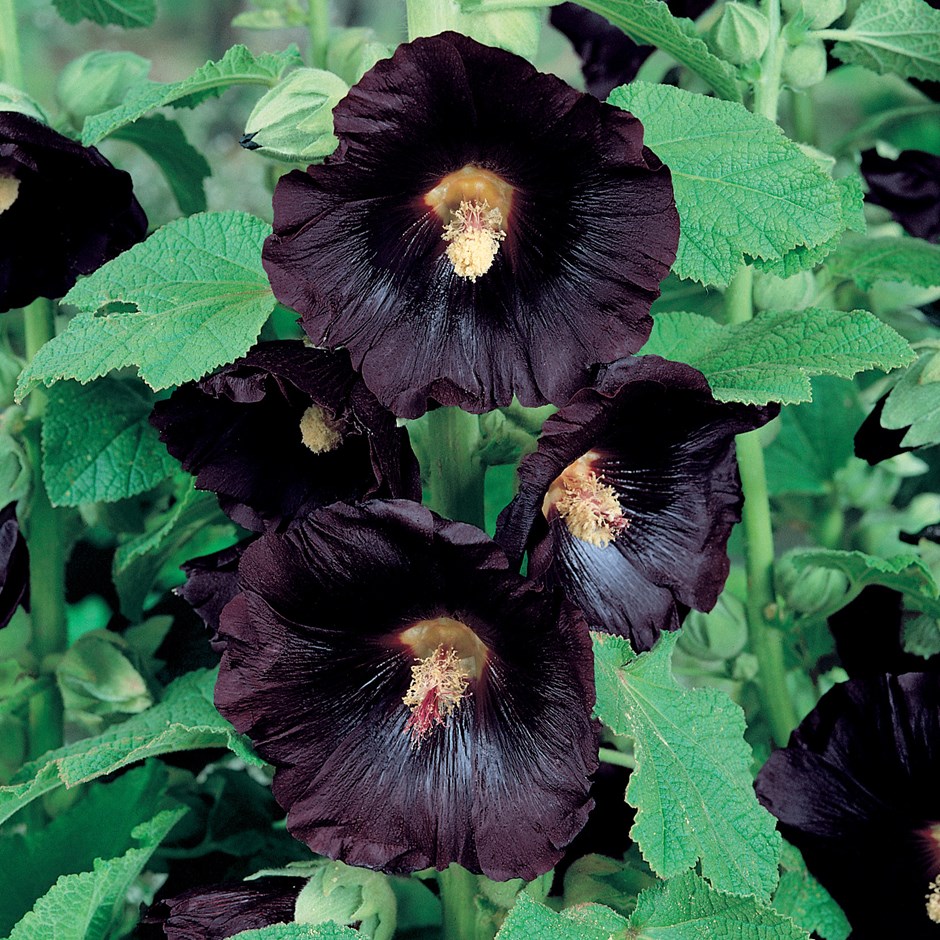



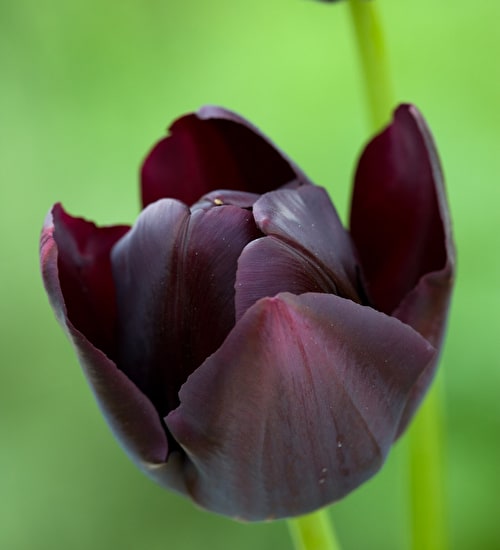
Turn to page 113 of October’s The Simple Things for more black gardens.
More from the September issue:
More plants:
Photograph: Jo Emmerson
Positive News from around the world | Balancing the books
When she realised that collections of rare literary works are dominated by male authors, AN Devers set about redressing the balance
"They are as close to perfect objects as exist in the world," smiles AN Devers, describing her favourite subject - books. Five years ago, she was working as an arts journalist in New York City when occasionally buying a signed first edition by a favourite writer turned into a more serious habit. Devers started going to rare book fairs and quickly noticed a price discrepancy in modern first editions by men, and those written by women.
“I knew that the rare book world was considered rather old-fashioned, but I hadn’t realised there were so few women book collectors or dealers compared to the number of men who sell and collect," she says.
Not long after, Devers was struck by the idea for The Second Shelf: a rare book business focused on books by and about women. The collector trade is part of a supply chain, she explains, one that leads to readers’ bookshelves, universities, archives and libraries. Historically dominated by white, Western ‘bookmen’, women – particularly women of colour – have simply been deemed less collectable.
“I put it down to the gender bias that plagues nearly all fields,” she says. “Women’s contributions are typically undervalued across all areas of our life and professional experience.”
The only book she has given herself permission to keep “that I could – and should – sell” is a first edition of Sylvia Plath’s The Bell Jar. Written under the pseudonym of Victoria Lucas, it’s a work that Devers calls “tremendous and underrated”.
Earlier this year, Devers also launched a Kickstarter crowdfunding campaign. It was a way to communicate the gender imbalance issue and also to raise funds for her burgeoning business. She used the proceeds – 608 backers pledged £32,000 – to launch an online book shop. And she now also prints a quarterly publication: a magazine and rare book catalogue hybrid for people who share her passion.
AN Devers and some of her favourite books at Second Shelf (thesecondshelf.com).
Turn to page 52 of October’s The Simple Things for more articles written by our friends at Positive News, the magazine for good journalism about good things. See the world from a different angle; positive.news/subscribe.
More to make you happy:
More could-do lists:
Illustration: Kavel Rafferty
Stories behind superstitions | The wrong side of the bed
Why do we talk about the wrong side of the bed? There are sinister reasons underfoot
Having a bad day? It’s not because of that massive delay on your way into work or forgetting that appointment. No, it’s obviously because you got out of the wrong side of the bed this morning. These days, we don’t tend to have a specific side in mind, but in earlier times, the wrong side specifically meant the left. The Latin adjective sinister originally meant ‘left’ but later took on meanings of both evil and unlucky: inn-keepers were said to push beds against walls to prevent their guests being able to get out of anything but the ‘right’ side.
Thankfully modern surveys trump Roman superstition. Over the past decade we’ve not only found that those who get out on the left side each day are likely to have more friends and to enjoy their jobs, but they are also more likely to be in a better mood than those who instead choose the right-hand side.
More from the October issue:
More superstitions:
In what way is this a gift?
Domestic disasters, terrible weather, awkward family situations – whatever life throws at you, try reframing it with the question above. Not only does it make you feel more optimistic just by asking it, you’ll find it doesn’t take you long to see the positive side. Jot down some things that are niggling you at the moment and see if you can turn them around.
Eg, our TV is broken = We have more time to talk/read/listen to music.











